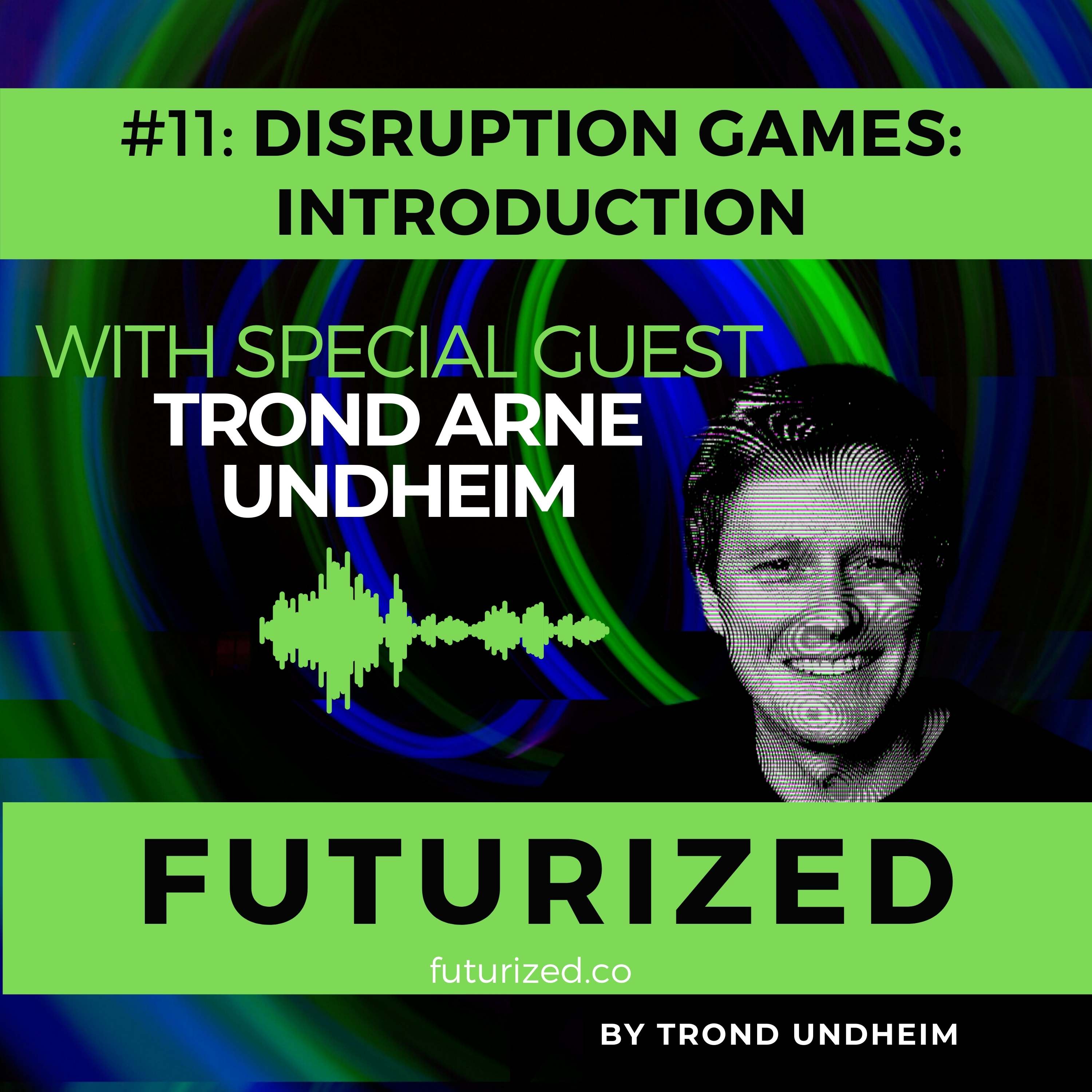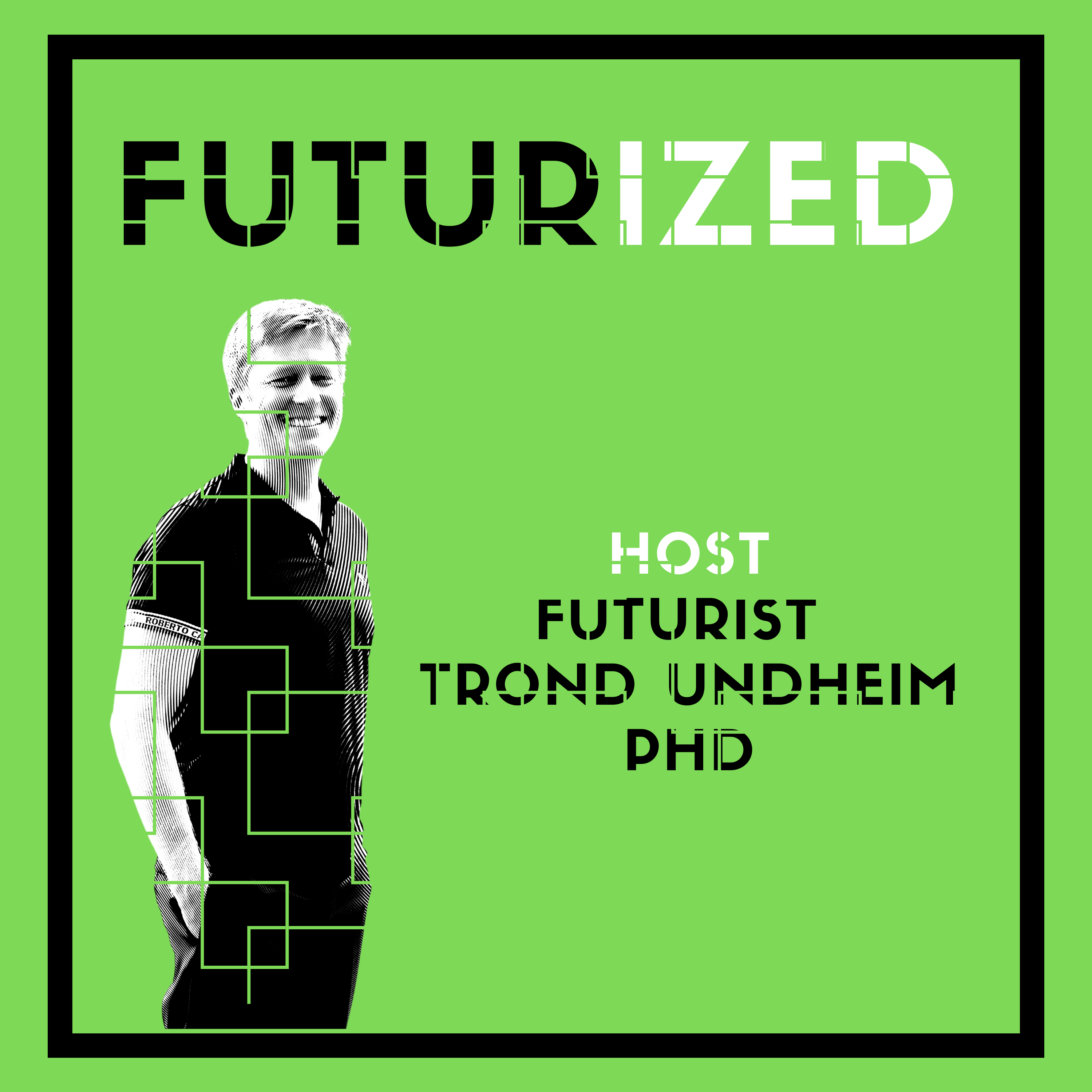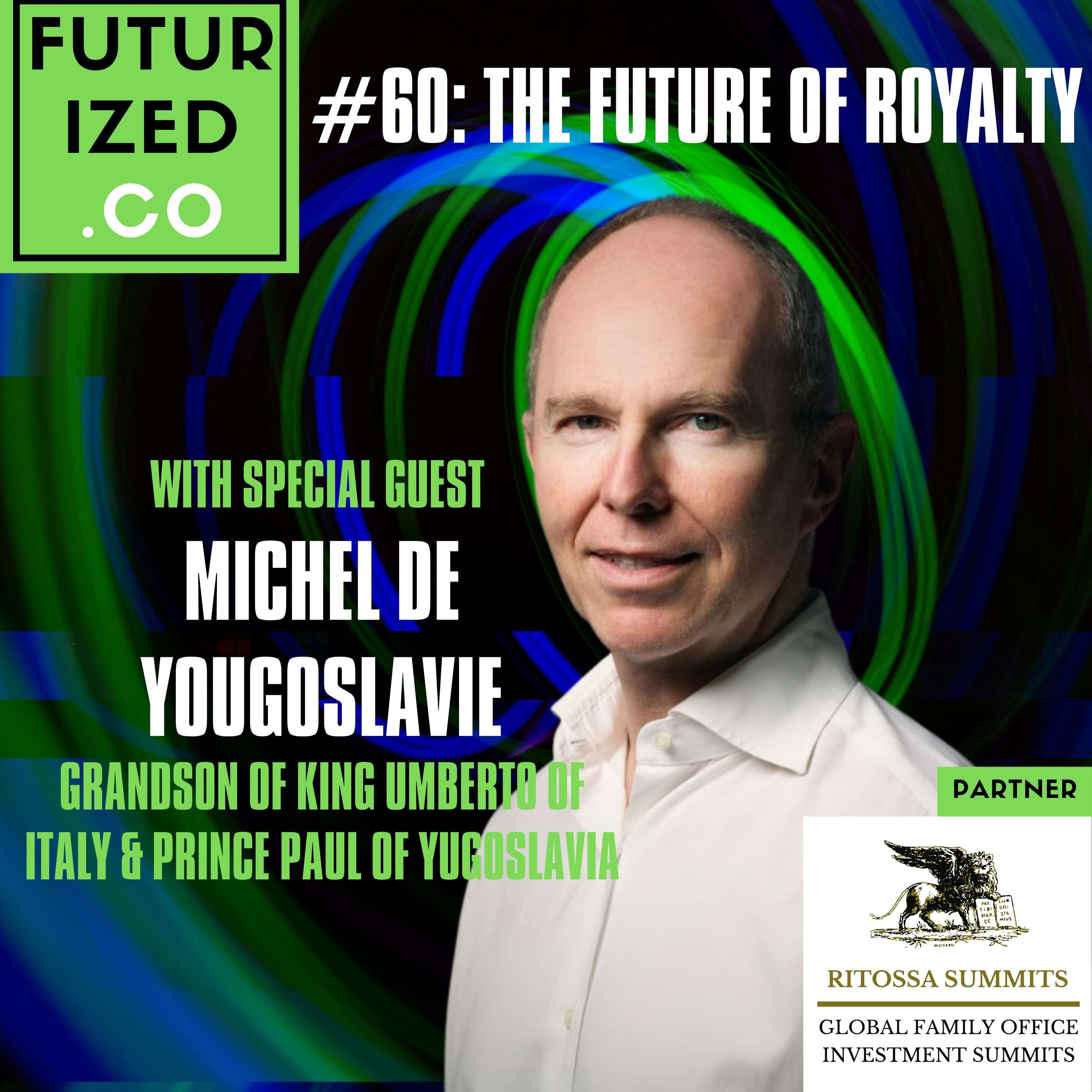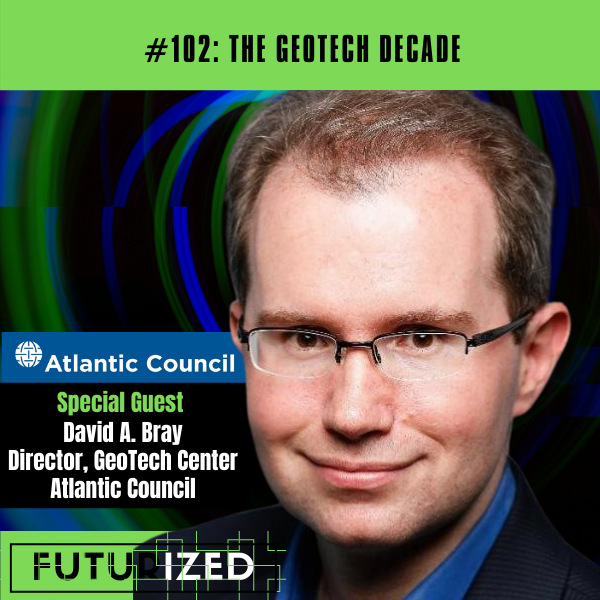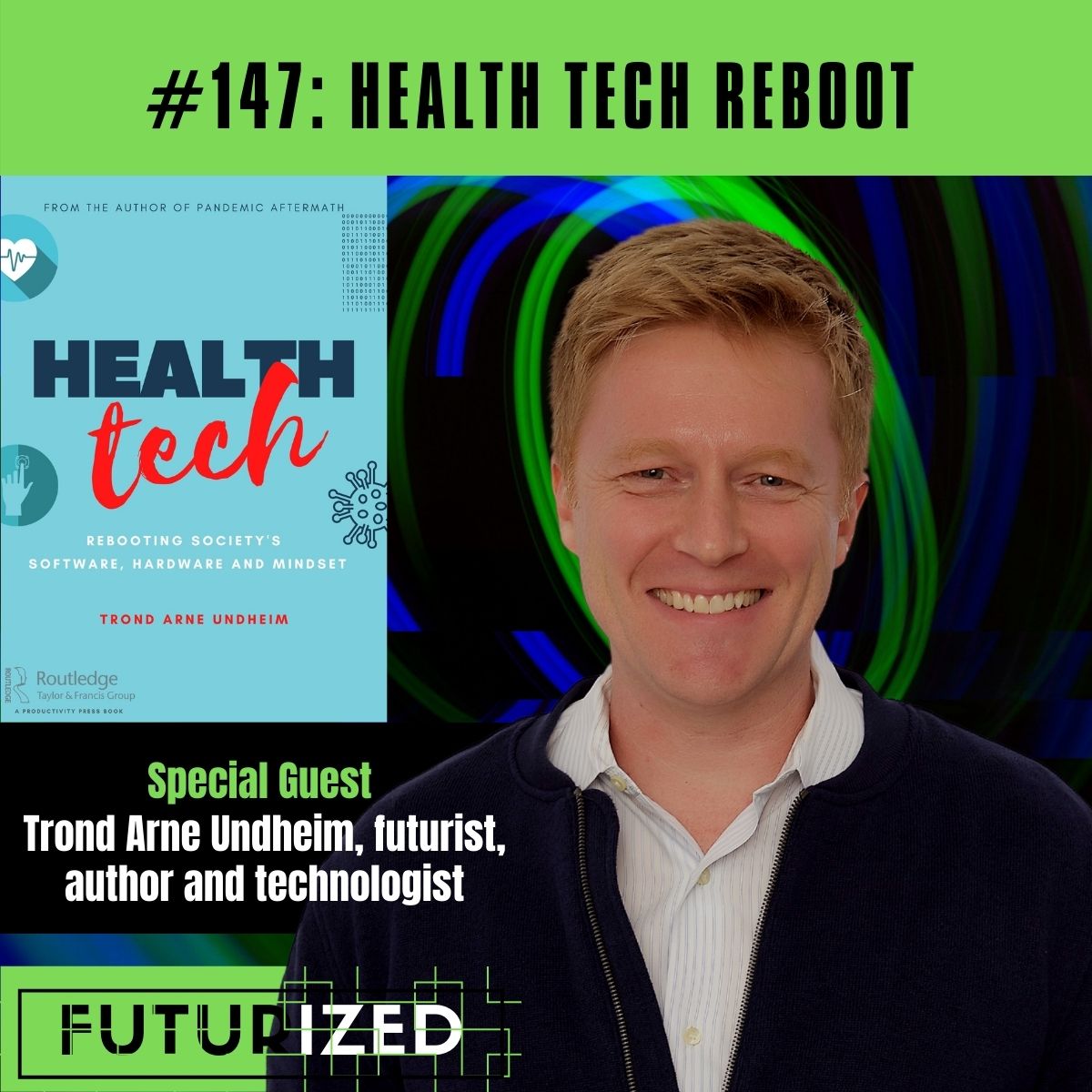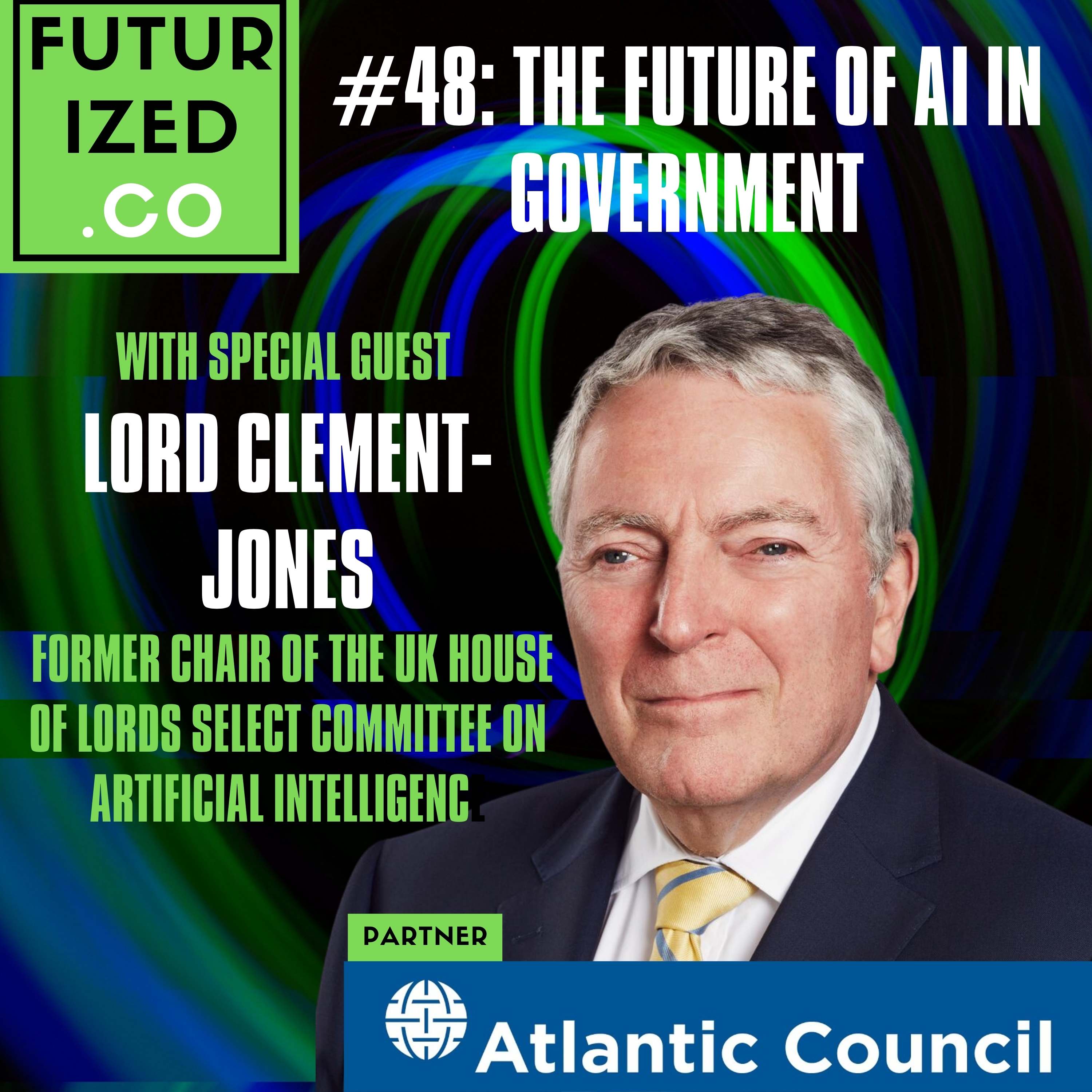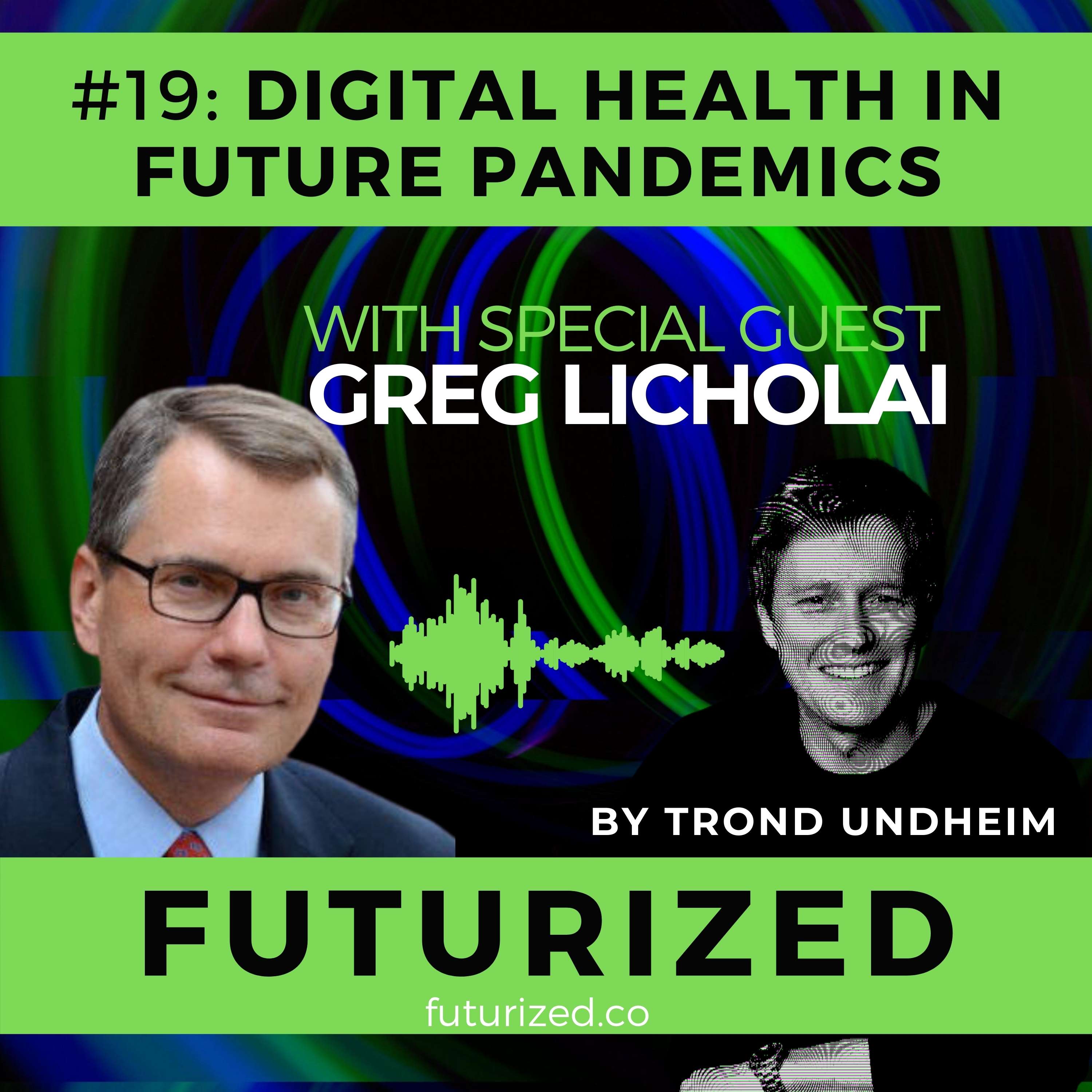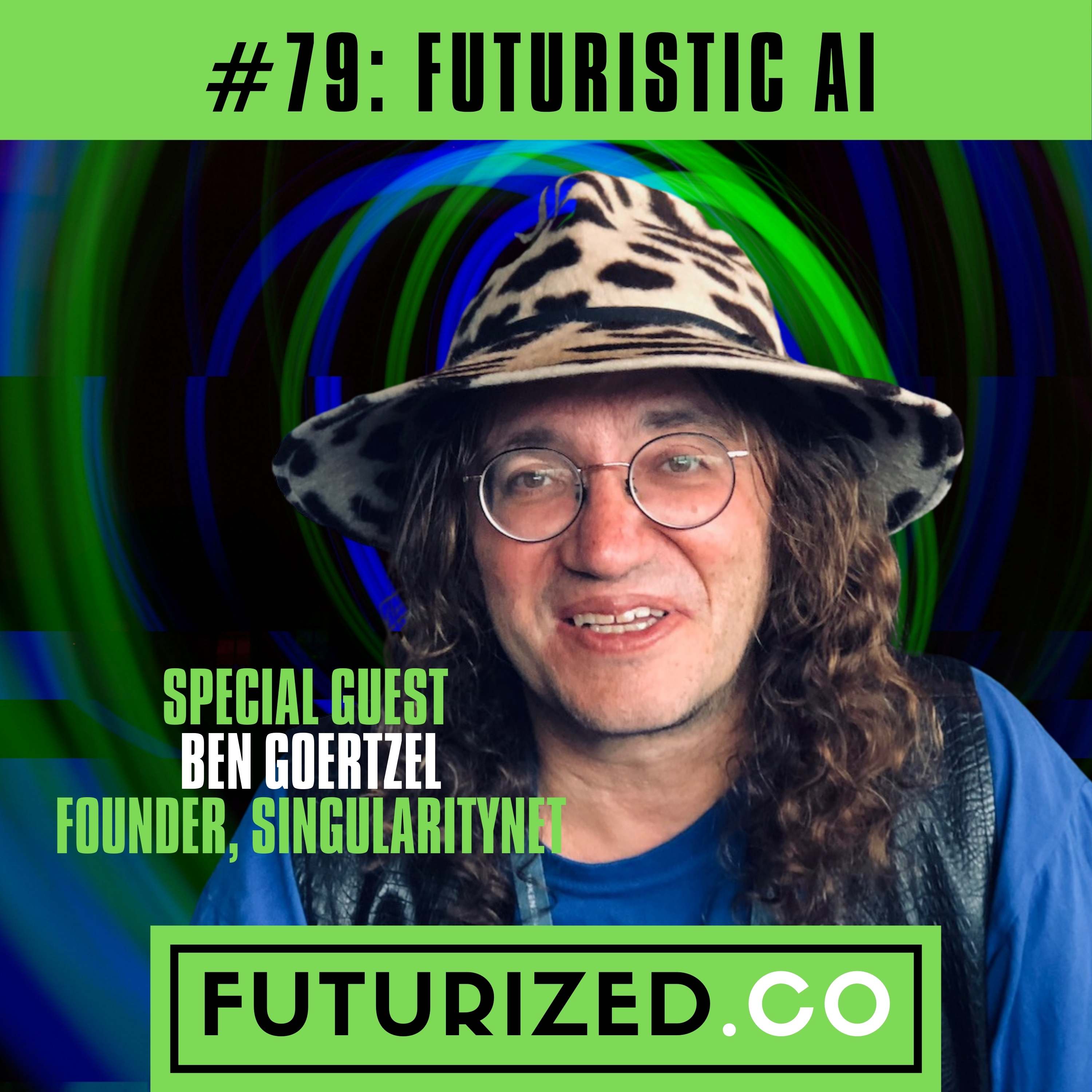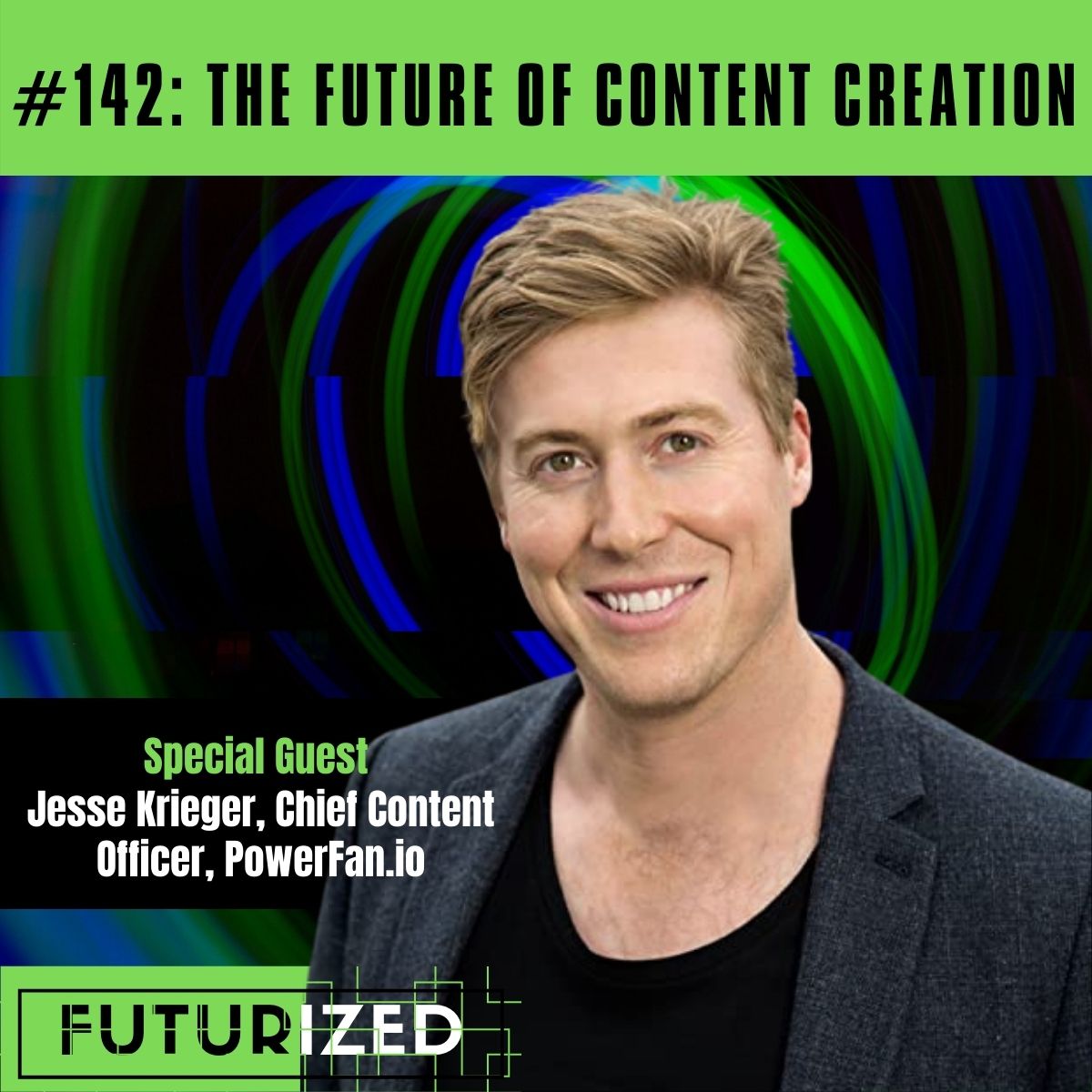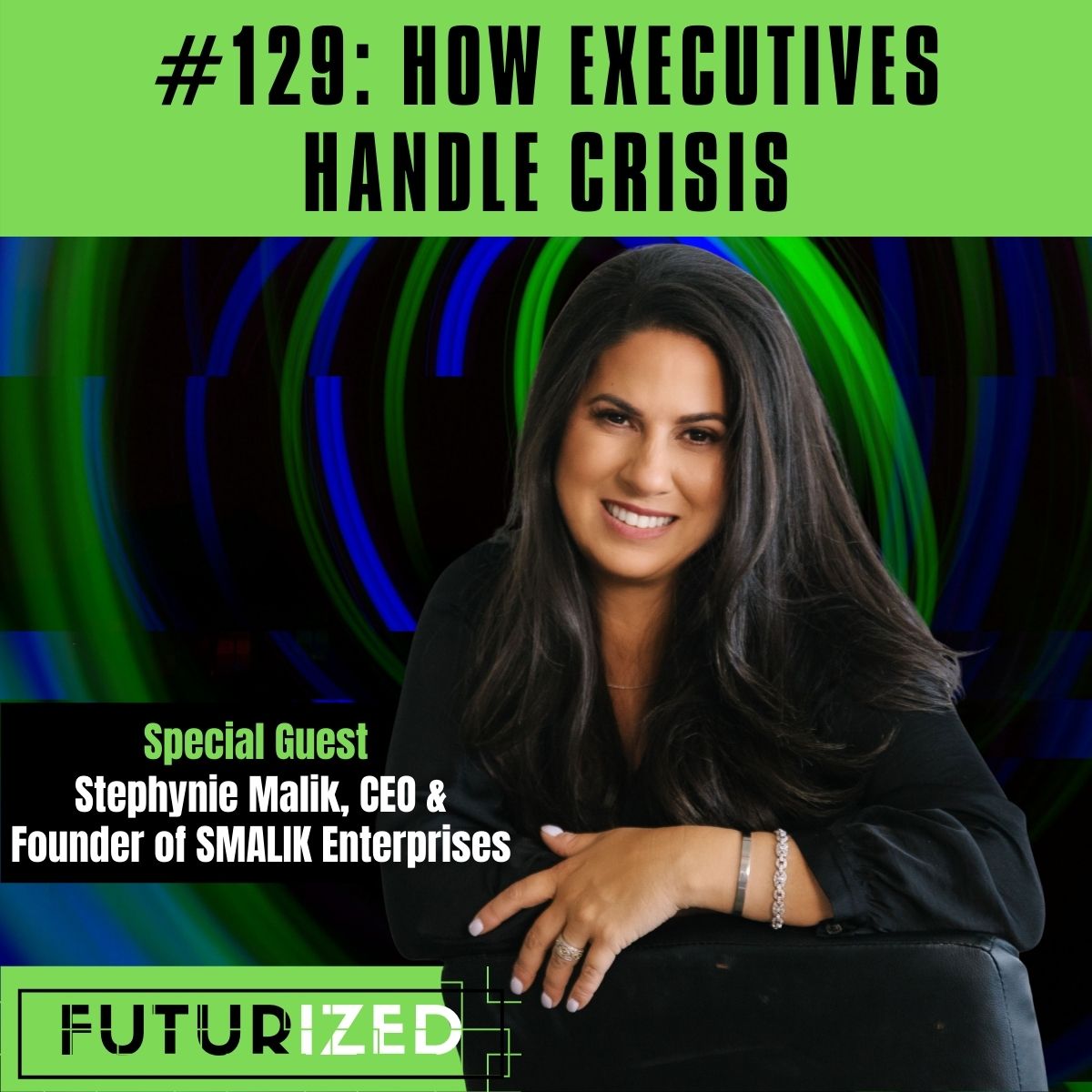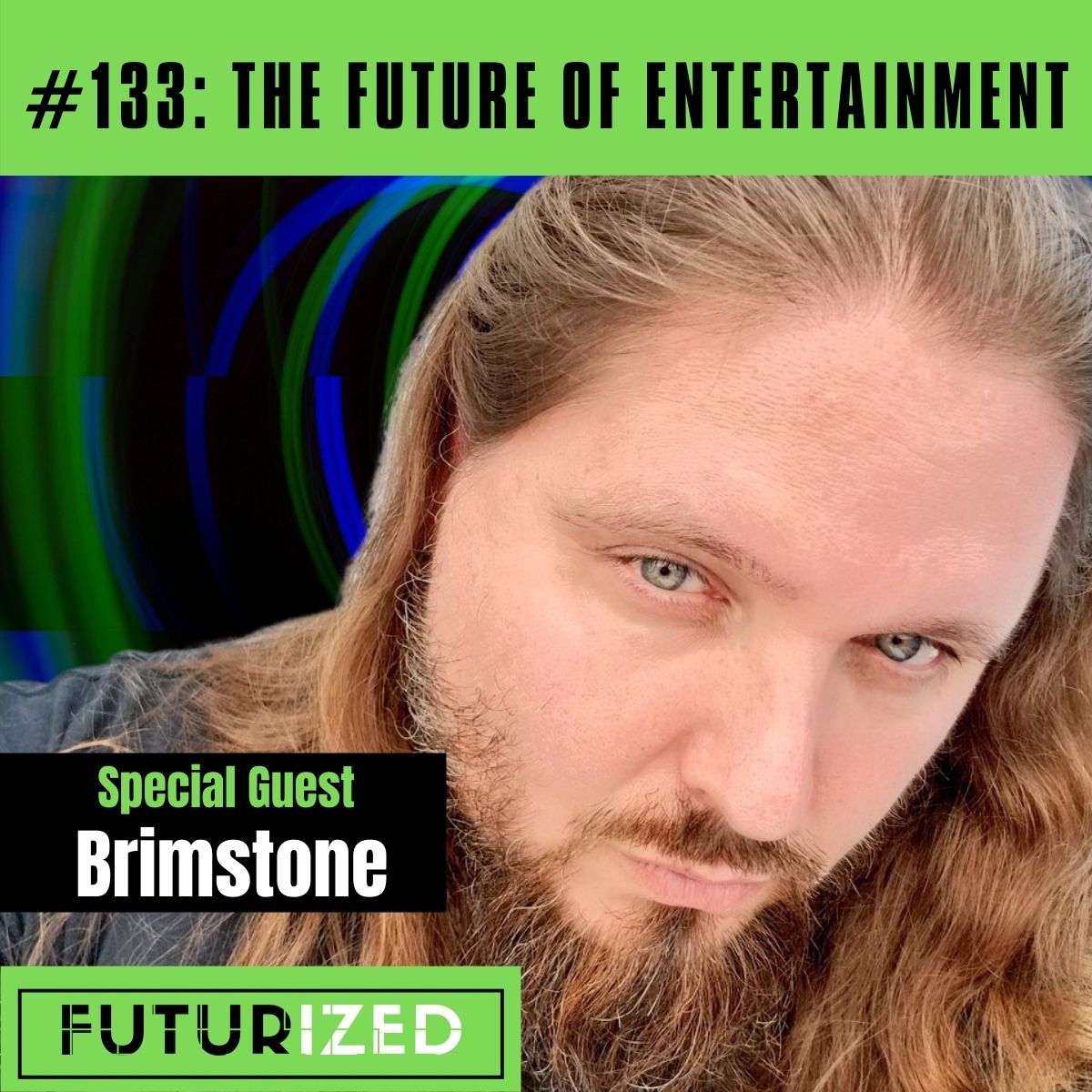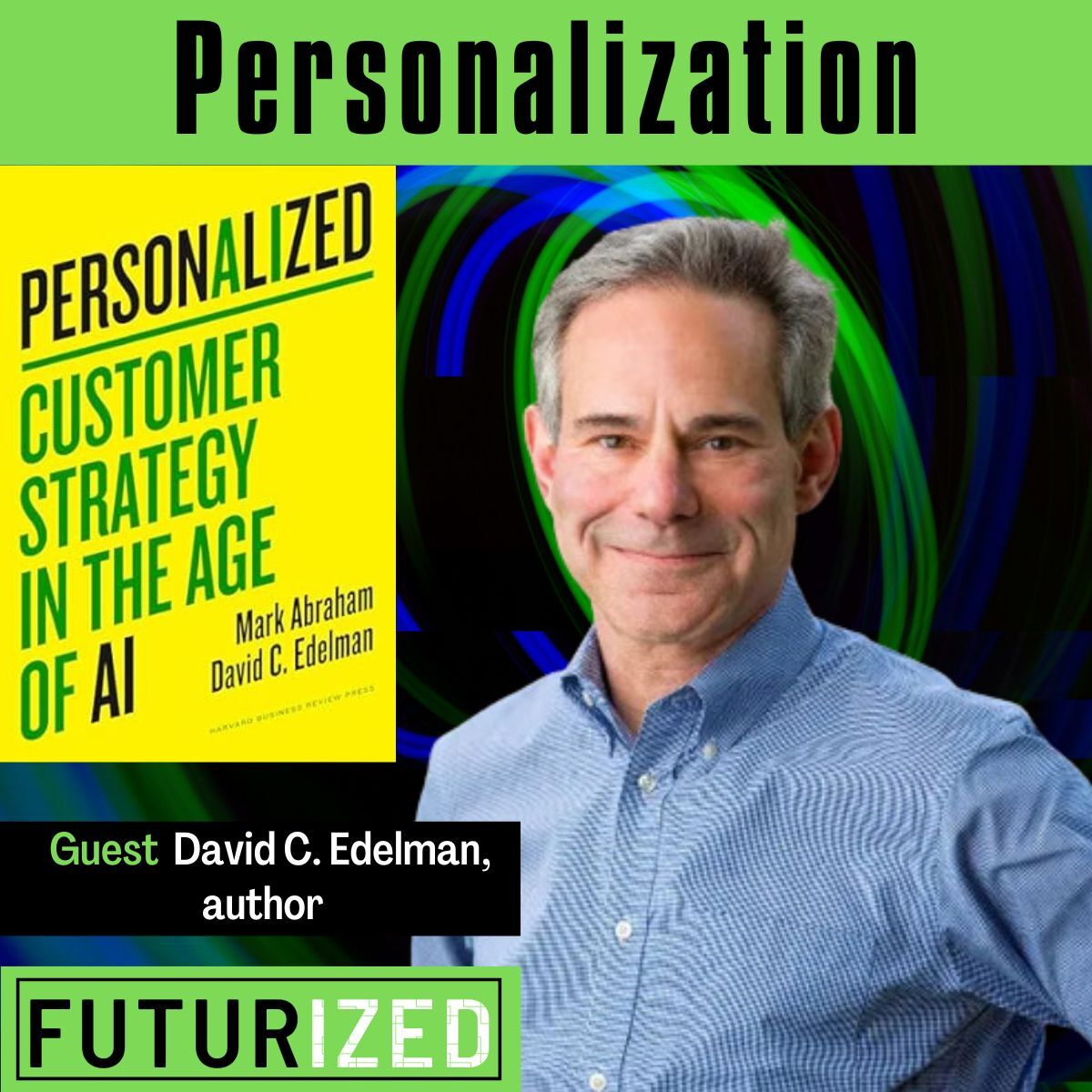AI Talent Diversity
Taniya Mishra, Founder of SureStart, the diverse AI training platform, interviewed by futurist Trond Arne Undheim.
In this conversation, they talk about why STEM or STEAM is not enough. They discuss pre-college and post-college--the leaky inflection poi...
Taniya Mishra, Founder of SureStart, the diverse AI training platform, interviewed by futurist Trond Arne Undheim.
In this conversation, they talk about why STEM or STEAM is not enough. They discuss pre-college and post-college--the leaky inflection points for students 16-23. What about Diversity, Equity, and Inclusion (DEI), the importance of relational, proximate mentoring, fairness in algorithms, affective computing, emerging applications (learning, factories, automotive, healthcare). Emotionally literate AI. Surestart.com-a startup mentoring the next generation. How can AI change the world for the better? The future of AI education. How to scale kindness?
After listening to this episode, check out SureStart as well as Taniya Mishra's online profile:
- SureStart https://mysurestart.com/
- Taniya Mishra (@taniyatts) https://www.linkedin.com/in/taniya-mishra-phd/
The show can be found at Futurized.co. Additional context about the show, the topics, and our guests, including show notes and a full list of podcast players that syndicate the show can be found at https://trondundheim.com/podcast/. Music: Electricity by Ian Post from the album Magnetism.
To advertise or become a guest on the show, contact the podcast host here.
If you like this topic, you may enjoy other episodes of Futurized, such as episode 51 which is on AI for Learning, episode 16 on Perception AI, or episode 49 Living the Future of Work.
AI Education_mixdown
Trond Arne Undheim, Host: [00:00:00] Futurized goes beneath the trends to track the underlying forces of disruption in tech policy, business models, social dynamics, and the environment. I'm your host, futurist and author. And this episode of the podcast to topic is AI talent. Diversity. Our guest is Tanya Mishra, founder of shore start that diverse AI training platform.
[00:00:26] In this conversation, we talk about why STEM or steam is not, pre college and post leakage. There is the leaky inflection point for students between 16 and 23. And what about diversity? Equity and inclusion, or D we discussed relational, approximate mentoring, fairness in algorithms, effective computing and emerging applications.
[00:00:53] Learning. Factories automotive and healthcare. We discuss emotionally literate. AI. Sure. Start is a startup mentoring, the next generation of AI leaders. At scale, we discussed multimodal emotion recognition and how AI can change the world for the better. How to scale clients,
[00:01:18] Tanya, how are you today?
[00:01:20] Tanyia Mishra, CEO & founder, SureStart: [00:01:20] I am doing really well. And I'm very excited to be here talking to
[00:01:23] Trond Arne Undheim, Host: [00:01:23] you. Yeah, this is going to be a cool discussion because you are so passionate about the future of AI and the different faces of AI that we need to have in order to create a fair and interesting society in the next few years.
[00:01:39] But first off, I wanted to take a little time to. To note that you have a super interesting background you've worked at T and T you'll have a PhD in AI. You have worked at Affectiva as the director of AI research there, and now you're founding your own company. What else have you done? And how did you get to this date where you're basically starting a new company in AI?
[00:02:05] Was that always written in the cards, Tonya or did it just happen under, Under influence of all these experiences here?
[00:02:14] Tanyia Mishra, CEO & founder, SureStart: [00:02:14] I think no first it was not written on the cards. I think it has always come from A basic sort of a principle that I've followed in my life, which is work should be fun.
[00:02:26] And I have always pursued the thing that has seen the most interesting to me. And I have the other pieces. I've never done it alone. I have always done it with a lot of the network of friends and mentors and supporters. And so it has been a combination of me striving. I am an unabashed striver. I am always reaching for the next thing.
[00:02:52]There, my, my husband always jokes with me that I never sit down. I'm always moving. I'm always like onto doing the next thing. And. Yes. I have come to accept that as a part of my personality, that I am always looking for, like the most exciting thing to do. The thing that I'm most passionate about, that is how I actually got into computing as well.
[00:03:16] And I got into computing much later than most people do now. And certainly even most people, our age the first time that I dealt with computing or really computers was at the age of 20, I had not even seen a computer. That's crazy.
[00:03:35] Trond Arne Undheim, Host: [00:03:35] It might many people wouldn't believe that's even possible.
[00:03:38] Yes.
[00:03:39] Tanyia Mishra, CEO & founder, SureStart: [00:03:39] I sometimes look back and it's been about 20 years since the first time I saw a computer. And it has been an amazing journey of going from one, Awesome. Ambitious, crazy step to another one, but it all started when I came to the U S at the age of 20, and I met a computer for the first time and actually on the premises of GE, my aunt was an engineer there and like most people who have new relatives who come to the U S you take a day off to entertain them.
[00:04:12] And day two, you're like, what am I going to do with my relative? So she dragged me to work with her. And she said to me at the desk that was next to her and she showed me how to turn on the computer. And she showed me how to turn, bring up a terminal. And I always say that was the beginning.
[00:04:28] I saw the power that computers have to connect us to help us learn, to entertain us. And back then, there weren't as many cool things, but online as there are now, but I was hooked.
[00:04:44] Trond Arne Undheim, Host: [00:04:44] I love that. You said you met the computer?
[00:04:47] Tanyia Mishra, CEO & founder, SureStart: [00:04:47] Yes. I always think of it that way. I met a computer. It was so life-changing great.
[00:04:53] And a few weeks later I was at university and considering, what should be my major because I actually joined a university in the U S as a sophomore and not as a freshmen. So in some ways there were lots of things to figure out quickly. And my advisor, like all international students have happened to be the director of computer science at the college.
[00:05:18] And she, as I was looking through this big booklet, she goes, have you considered computer science? And I looked at her as though, are you crazy? I am not just, very new to this and probably in the whole school, the least equipped to be a computer science major. Because I hadn't just met a computer and, but I, at the same time, I was so excited that once given the chance, I didn't want to let it go.
[00:05:45] And so I must have talked her ear off about all my, all the exciting things and that one could do with computers. And it's funny because she was the director of the computer science department, but what was so cool was that professor Ann Smith that day. She took a chance on my dreams. She took a chance on my ambitions, even when I didn't even have the vocabulary to express myself appropriately in that, in the language of, in technical language.
[00:06:16] And that was the beginning. And from then on, it has always been, what is the most exciting thing? At that at any given time that I could do the thing that I'm most passionate about. So that's how I ended up here.
[00:06:32] Trond Arne Undheim, Host: [00:06:32] This is a very good explanation of why you have founded. Sure. Start to ritual. We'll get to, in a little while, but look, you've come quite a way.
[00:06:43] I would say with 48 patents having learned computer science at age, whatever 20 plus, however long it took you to learn it. That is crazy.
[00:06:54] Tanyia Mishra, CEO & founder, SureStart: [00:06:54] Yeah. It hasn't been a journey. It has been exciting. It has been fun. It hasn't been challenging. That's what makes it fun, but you
[00:07:02] Trond Arne Undheim, Host: [00:07:02] think that's possible for other people too?
[00:07:05] Tanyia Mishra, CEO & founder, SureStart: [00:07:05] Absolutely. It's never too late,
[00:07:07] Trond Arne Undheim, Host: [00:07:07] right. Because I think that's really the very powerful message you have here, which is, barring that you are some outlandish genius, which I think you probably also are, but you are saying whether you are a genius or not. It's actually possible to start at 20 and become an AI scientist, for instance.
[00:07:24] Tanyia Mishra, CEO & founder, SureStart: [00:07:24] Yes, it is possible to start at 20 and become an AI scientist. And I'm hoping it's possible to start at, let's say, 40 something and become an entrepreneur.
[00:07:35] Trond Arne Undheim, Host: [00:07:35] Yes. We'll talk about that as well. Why don't we do this? I am interested in what AI. Education is, and I'm interested in, what about AI is so interesting to you right now?
[00:07:52] Because there are a lot of, and I've had people on the podcast talking about technical aspects of AI. I've had people talking about vertical applications in FinTech or in other specific domains, but you have a passion for the phenomenon that is a little broader than that. Can you explain. Maybe mirroring a little bit, how you would introduce it to someone who would come to this for the first time.
[00:08:19] What is it that fascinates you and should fascinate anybody about AI right now?
[00:08:28] Tanyia Mishra, CEO & founder, SureStart: [00:08:28] I think what I find fascinating about machine learning about the field of artificial intelligence Is in some way almost its definition, right? Like we call it like the name artificial intelligence is so audacious.
[00:08:47] We are saying we are going to build, the people who coined this word, they said, we're going to build machines, systems. Automation that can mimic human intelligence. Now having been in the field for a long time, I can say we are a long way off from being able to fully mimic human intelligence.
[00:09:09] However, the things that we have gotten quite good at is developing systems that can learn specific patterns and can that, that can do it at scale and that can do it. Much faster than, individual human can. And this means, so what that means is that, there are lots of tasks that we can get, these AI models to do that leaves us free to be so much more creative too.
[00:09:40] Leaves us free to be thinking about how to. How to harness its power to do things that change the world for the better it's leaves us room for our creative, innovative thinking. And I think that's, what's exciting to me. Because every single day I feel like I am seeing new and interesting and really eye-opening examples of how.
[00:10:08]Machine learning is being used, but it also leaves us with this really interesting responsibility of how are we, how are we measuring the human impact of technologies that we are building? And more importantly, who are we including or not, including in, in the journey of developing these technologies.
[00:10:32] Trond Arne Undheim, Host: [00:10:32] Yeah, let's get to that because in fact, technology for all of its wonders has historically been developed by a very small niche of people. Hasn't it? They have largely been white and they have largely been, educated at the same few technical schools. And they have been of a certain age. They have been of a certain socioeconomic demographic and they have been from certain countries even.
[00:11:00] What has that done to our technology specifically to machine learning as it, as we see it today, what are some of the consequences that you see in 2020 out of this kind of skewed development of a small percentage of the population has developed where we are today? How different would it have been? If we had started with a much more equal playing field, some more women in there, perhaps some more people from.
[00:11:27] I don't know, Africa, perhaps, like what would the, what would these technologies have looked like? Have you ever thought about that? Oh,
[00:11:34]
[00:11:34] Yes. I know you have
[00:11:37] Tanyia Mishra, CEO & founder, SureStart: [00:11:37] to stay here thinking about it. And actually it's really exciting how, some of these conversations were happening in small groups and by a few people, and now it, the lid has just been blown apart and we are all discussing it.
[00:11:54] And these questions around, gender and. Ethnic representation or lack thereof in technology is on the forefront of our collective minds. But if you think about, I just talked about the promise of automation, the promise of AI leaving us time and freedom to be creative, to be innovative.
[00:12:18]But the reality on the ground right now is that AI has not delivered on that promise. In fact, the many applications of AI that are around us that are being marketed and sold and even being used by people continue to discriminate. Penalize and even leave out people or entire groups of people.
[00:12:41]One example that I was just thinking about in because of something I read. So one of the reports that I was reading is that black advocates are saying, when you are creating these focus groups or study groups to study the effects of COVID vaccine. You must include, people who are black and you must have enough representation and you'd have to be thoughtful and intentional about it.
[00:13:04] And that makes a lot of sense, because if you look at some of these some of the research around skin cancer, So when those studies were done about skin cancer detection, the population on which it was studied was largely white. So the thresholds that have been developed works really well for that population.
[00:13:27] But that means that. It is also underserving, black communities or people of color because skin cancer is going undetected in those communities. And now that we are in the middle of a pandemic and as the vaccine is being developed, We do not want to repeat those mistakes. We want to be intentional about the datasets that we are creating on which we are studying the problem on which we are developing the parameters and the thresholds.
[00:13:57] So ultimately, the logic or the, the tool that we developed for detection or evaluation is more representative. And it generalizes across populations. So it's the same thing with, any machine learning algorithm that we are building. There's a lot of talk around the data sets from which these models are learning.
[00:14:23] But didn't exist in a vacuum. People created these datasets and data sets are created by people like me. Like in my past job, a lot of my job was doing design of data collection. How do you collect data? Who do you collect data from? At what time do you collect data? And consequently, if you, if.
[00:14:44] That design is being done primarily by one kind of people. Then there are going to be things in spite of their best intentions that fall in their blind spots.
[00:14:55] Trond Arne Undheim, Host: [00:14:55] How bad is the situation? Do you have any statistics on basically how unequal in terms of diversity, equity or inclusion? The situation is when it comes to AI developers today, roughly is it a skew or 90% are in the same socioeconomic group or is it a little more equal than that?
[00:15:17] Tanyia Mishra, CEO & founder, SureStart: [00:15:17] So I don't really have statistics on socioeconomics and I think those are perhaps a little more difficult to study or, estimate, but I have some statistics around race and gender. So if you look at, Yeah, professors, less than 20% of AI professors are women. If you look at, AI technologists, a little more broadly I think.
[00:15:43] Less than 25% are women. And this is just around gender. If you consider race at the top tech firms, the number of, people are employees who identify as black or Latin X it's in single digits and in the low single digits bring together race and gender together. The numbers are embarrassingly small.
[00:16:05]It's down to a percent, to 3%.
[00:16:09] Trond Arne Undheim, Host: [00:16:09] So that brings me to the question that I guess you are actually addressing with your startup, what to do about this, because, I guess the Scandinavian approach or I'm from is to mandate things, right? We mandated 50% women on boards. We haven't quite gotten to this problem, I think yet I, I'm not there, so I'm not following the discussions, but I think that they've been slower to come to these kinds of regulations, but.
[00:16:36] Short of mandating. What is the other way that you can approach this? How do you stimulate a more balanced situation and for it not to take a hundred years to even out.
[00:16:48] Tanyia Mishra, CEO & founder, SureStart: [00:16:48] Yeah. So my approach with shore start is more of a ground up approach because plenty of studies have shown that, once again, coming from best intentions when companies or organizations do more top down initiatives around diversity, equity and inclusion, this sort of fail at the individual decision maker level.
[00:17:12] Where people individual decision makers, they usually, what I have heard people say is, yes, diversity is important, but I want the best. And I always say, it's not a, but it's a hand. You want a diverse workforce and you're going to get the best. And really that, that it is with that thinking that I started short start.
[00:17:35] And so our approach is let's take this, STEM pipeline or technology pipeline, and really push it back. So let's not wait for people to start applying for jobs to then ask ourselves, how does personally compare with person B even though person a might have had a lot fewer opportunities and a lot less access than person B.
[00:17:59] I'm saying, let's go meet these kids in high school. Let's introduce, AI training and give them this kind of support that I was very fortunate to receive, but do it really intentionally and create a big, a comprehensive holistic pipeline that is student is 16. Could first join the four, start community, get the training, get the mentoring and stay in this network of access, opportunity and learning.
[00:18:32] Until they get their first job out of college at age 23. So our program is really focused on students in that 16 to 23 year old range between high school and college.
[00:18:46] Trond Arne Undheim, Host: [00:18:46] You know what I find so interesting about this approach? This approach?
[00:18:52] Tanyia Mishra, CEO & founder, SureStart: [00:18:52] Yes no, that's
[00:18:54] Trond Arne Undheim, Host: [00:18:54] great. I am hearing a little echo in my voice. I don't know what's going on.
[00:18:59] Could you hear this?
[00:19:01] Tanyia Mishra, CEO & founder, SureStart: [00:19:01] I do not hear the echo.
[00:19:04] Trond Arne Undheim, Host: [00:19:04] I'm hoping it goes away. All right, I'm going to go ahead. It disappeared now. Hopefully this is good. I'm going to remember in the tape. I was just curious, how do these students learn? Because traditionally, and that's what I was going to say.
[00:19:19] It's, these initiatives take forever because they're like, we're gonna help you get to a school. That has these opportunities. You have scholarships to like Ivy league schools, but this approach is much more flexible. It's micro-learning, it's learning. How long does this process take for you and what sort of trajectory do you plan to put these students on?
[00:19:43] How quickly, how many courses.
[00:19:44]Tanyia Mishra, CEO & founder, SureStart: [00:19:44] So usually the program and the short start model is about five to six weeks long. And we create, we have created a really contained curated curriculum because there's almost too much information out in, on the web. If you go and say, Learn machine learning.
[00:20:04] There is so much information and each course is of a different length. And we know that kids are in school. There's already a lot going on with their lives and a lot of learning to be done. So what we've done is. Create this very curated curriculum that has taken introduction to machine learning and made it very bite-sized.
[00:20:25] So each day you have a small module that will take, somewhere between 40 minutes. Yeah. To, an hour and 20 minutes to do, and that you are working through this module and it's almost like I will call it multichannel. Sometimes you are reading something. Sometimes you're watching a video and then sometimes, and this is really important.
[00:20:46] You are actually coding up what you have just learned either by. Watching a video or some material that you have learned. And then during this process. So it's about this learning phase is two and a half to three weeks long. You are, you have this curriculum and you're following it through and you are doing it with a small, tight group of three or four students that we you meet with every single day for about 20 minutes.
[00:21:16] With now iMentor, who is just two steps away from you, a graduate student who has both the AI skills that are needed to help you walk through this material, but they also have the lived experience of. Making this transition from high school to college, to graduate school. So once you're completed with that learning phase, that's when we start having some fun, that's the challenge phase.
[00:21:42] So once again, we reshuffle the groups and make groups of four students once again, or maybe four or maybe five, depending on how many students we have. And now you are all together participating in a Make-a-Thon with, Real prize money at the end, and that's super motivating for students.
[00:22:01] And they have once again, a two to two and a half week period, when in teams of four, they are building a machine learning solution to a real world problem. And on the final day, showcasing it to a large virtual audience. Including, people who are professors, VCs entrepreneurs. So you have an amazing audience to showcase the work that you have done.
[00:22:27] How did you
[00:22:27] Trond Arne Undheim, Host: [00:22:27] develop this method?
[00:22:30] Tanyia Mishra, CEO & founder, SureStart: [00:22:30] I think this method for me, was developed very organically. I have been a technical mentor for 12 years at this point, started with one student at my first job, probably in my first month at and T and continued the path, just accumulated more and more mentees along the way.
[00:22:51]But I have always believed in this hand to mind connection, so you have to learn something and you have to almost immediately turn around and build something with those new skills, because. Try. And I don't know about you, but anytime I set myself on a path, which says, Oh, I'm going to learn this new programming language, day one and day two go really well. And day three other priorities take over. And then, suddenly, five weeks have gone by and I haven't gone past module one. So I found that instead, if we have very clear deadlines, goals, deliverables, We figure out a way it's like going on a journey. You want to go to Paris.
[00:23:37] You don't know how you're going to get there. Step one is, being really passionate about getting yourself to Paris and then you figure out the details. And the same thing was my approach with my mentees is. We are really excited about hitting that end goal of creating an awesome project that we are going to shout about to everyone that we know.
[00:23:58] And then we figure out the process, we get the skills, we get the teams, we, get the help and we know we've achieved that goal.
[00:24:09] Trond Arne Undheim, Host: [00:24:09] How many people do you think you can reach with this approach?
[00:24:15] Tanyia Mishra, CEO & founder, SureStart: [00:24:15] I think that right now are each of our cohorts are between 50 to 75 students, but of course there are so many more students that we would like to reach.
[00:24:28]The number of applications we get even. Too, it's five, seven times more than the number of people that we are able to accept. So we are really thinking about scaling this problem by including more. More mentors, like opening, really blowing this up to include a lot more people.
[00:24:49] Anybody who wants to pay it forward, who has the skills can be a mentor and then bring them together with these young kids, irrespective of where they are, this a fully virtual program. So creating a virtual community that can bring together people who are really excited about learning and people who are really excited about teaching and creating a community where they can do that with intentionality and awareness,
[00:25:19] Trond Arne Undheim, Host: [00:25:19] how fundamental and I guess it depends on what level, but how fundamental are AI skills to you in, in, in the future and by the future, let's just say over the next decade or two, the reason you're doing this is to level the playing field, but it is also to teach something. You find us very fundamental in and in the world, in the emerging society too, to what extent are the things that you're teaching people becoming basically life skills versus it's just a technical skill that will give you a job.
[00:25:53] Tanyia Mishra, CEO & founder, SureStart: [00:25:53] Yeah. I think that even if we if we just consider our day, each day, we're making probably, thousands of decisions every single day that involved AI in some way,
[00:26:07] Trond Arne Undheim, Host: [00:26:07] meaning that they involve algorithms that you're either being subjected to, or that you're actively contributing to the algorithm by some something you're doing.
[00:26:16] Tanyia Mishra, CEO & founder, SureStart: [00:26:16] Yes. Both really whether you are, Taking an Uber, whether you're getting online to have a conversation there on the back end, there is so much automation that is going on. There is use of machine learning, use of estimation, use of statistical modeling that is constantly happening in order.
[00:26:38] To enable us to interact with and through technology and then making decisions that have direct effects on our lives. And I think this trend is only going to continue. And I think AI is a new economy. It is the new green. And, but that means that it also has the potential to. Divide people, basically the people who, you know, groups of people who have the skills to participate in the new economy and the people who do not have those skills to participate in this new economy.
[00:27:12] And consequently, this divide that we already have could grow bigger and my goal true. Bringing this kind of training, mentoring, and amplification to young people much earlier on in their career. The goal is to enable everyone with the skills to participate in this new economy. And it's not just a financial thing.
[00:27:36] It's also, what are we building? We want to build robust. Products that work for everyone that are equitable that make the world better. It's goes back to the theme of, AI has a lot of promise, but it's incumbent upon us to help deliver that. And that requires us to include people who are right now not represented in our field.
[00:28:03] Trond Arne Undheim, Host: [00:28:03] How optimistic are you that it's moving in that direction. If you are going to forecast the next decade, let's just say absence first start, absent something that you're doing, because you're obviously very passionate in and hopefully, you will make a big impact here, but if you just look at the world around you and what's happening on its own right now, Is it going in a direction where more people would be learning these things or is it at the moment going in the wrong direction?
[00:28:33] Okay. Are people basically picking up these skills on their own or are they do they need these kinds of new learning paths to to be able to profit from AI? Okay,
[00:28:50] Tanyia Mishra, CEO & founder, SureStart: [00:28:50] Tron, the first thing I think your voice was pixelating a little bit, and so I could not understand the first part of the question, but I think what I heard from the later part of your question was, do I think that people can learn this on their own?
[00:29:05]Can they develop these new learning paths, these new computational learning cultures on their own right. My thinking on it. And I think it comes both from personal experience, but also from just observation of my Of the people I've been fortunate to mentor really is that we all need a little help.
[00:29:29] Nothing big is, accomplished alone. I know that in in the business world, we really like to hold up those innovators, those builders, and it's this person's scaled this huge mountain all by himself. It's usually himself, sometimes herself. But the truth of the matter is it It takes a community.
[00:29:48] It takes a community to build up a person and it takes a team to accomplish large things together. So I think that it is very, it goes back to what I said about learning trying to learn a programming languages language on my own. Yes. One, one day, two days, you might have a lot of self motivation.
[00:30:08] You're like, I'm going to go figure this out, but things will get difficult. Like the, concepts around machine learning, I would not say are really easy. These are difficult things and they're challenging things and they are hard to do by yourself. All of us, especially in this virtual world, we are realizing how much.
[00:30:28] Other humans matter. And so I think that learning on your own is difficult. Can it be done? Sure. But can everyone do it? I don't think so. Let's learn together, let's grow together. And so I think in my opinion, it's that this mentoring piece that I've mentioned a few times is actually really crucial to my approach and shorts and what I'm trying to model in short start, because that was my lived experience.
[00:31:00] I honestly do not know that I would be sitting here talking to you about AI or having had the opportunity to contribute to the field of AI. Had I not had a mentor at the very beginning of my educational career, taking. A bet on my dreams or even dreaming my dreams for me, because I didn't know enough to dream them.
[00:31:24] Trond Arne Undheim, Host: [00:31:24] Yeah, no, this makes a lot of sense what you're saying, but it also flies in the face a little bit of what people generally think these days, which is all the information is out there. All I have to do is click on a YouTube video and I can learn whatever I need to do. And, I think those of us who.
[00:31:42] I believe in this myth, I guess we're wondering and walking around in an artificial world already, where we are already preconditioned. And maybe that is true for people like me and you, because we have been through so many educational path that we have learned how to learn new things and. Not that, we could pick up advanced things super fast than our own always, but definitely there's a certain skill that you have in terms of learning.
[00:32:08]But it is true. What you're saying is definitely applicable for all big chunk of people who might just assume that it's just a click around on YouTube, but. Is that not going to get us there for AI. It's not enough to just watch, Andrew, hang on, little 20 minutes like that.
[00:32:26] It's not what you're talking about. You're talking about a much deeper level engagement in focus curriculum yet. Not going for years to, go to a four year college. So there's some where you're talking about something in between. It's not this massive, lifelong commitment you're talking about.
[00:32:44]Maybe you get carried away, but it is also not this let's just watch a YouTube video.
[00:32:52] Tanyia Mishra, CEO & founder, SureStart: [00:32:52] It is not a less, if it's not, let's just watch a video or, let's walk through this material because if that were true, then all of these questions around, we can find enough people to hire in AI.
[00:33:07]That's the thing that we hear a lot these days. Why are there not enough women? People say that they can't find enough women and they can't find, enough. Young people from communities that are currently underrepresented and that's. We wouldn't have the problem of not being able to find people because there is so much information on the web that if all it took was watching a video or, reading through a PDF, then we would have way more AI technologists than we have right now.
[00:33:38]Trond Arne Undheim, Host: [00:33:38] So this brings up the question, because AI and machine learning techniques are changing very fast. What about right now? What is, what are the most adjacent skills? In other words, if you were to predict which students would do really well in your course, And I'm sure you're not doing this because you want diversity, but if you were to predict, would you pick math students?
[00:34:02] Would you pick social science students? Are there very specific technical skills that makes it much, much easier? I'm assuming for instance, then when you came to America at age 20 I did not ask you, but I was going to guess that you had some sort of traditionally called technical background, but maybe the future of, and I know you are deeply embedded in emotion, AI and effective computing.
[00:34:26] Maybe there are other skills from more that traditionally softer side that are equally important, in the long run. What is your reflection on that? Should a student not go to your course because they are in psychology or would you say that's not relevant? We need people of all backgrounds.
[00:34:43] Tanyia Mishra, CEO & founder, SureStart: [00:34:43] I think there are two things I look for most in people. And one of them is engagement. How badly do you want to do something? And I think that is so important ambition, right? If you want to do something that is step one, you will figure out the way. And we won't let you figure it out all on your own.
[00:35:01] That's what we talked about. If you tell me, I really want to do this. I'm here to support you really do that. And so engagement. And the second thing that I really look for is something that you alluded to is knowing how to learn, how to be successful at something. So when I have applicants who apply for this program, really, those are the two things I'm looking for.
[00:35:24] I am looking for, have you been. Have you been successful at anything? It does not matter. It does not have to be technical. It does not have to relate to, computer science though. There are, schools are doing a pretty good job now, introducing computer science earlier and earlier. But I think those are for me, it's quote unquote, the soft skills.
[00:35:47] And I'm not a big fan of that terminology, but it is engagement. It is drive and it's knowing how to be successful if you know how to be successful at music. You can apply those skills at being successful at machine learning.
[00:36:03] Trond Arne Undheim, Host: [00:36:03] I'm so glad you just said that by the way, I actually shouldn't have even used the term.
[00:36:07] I really detest the term soft skills. I have a book coming out where I completely killed that notion. We should actually not even repeat the words. It's Voldemort to me, it really is a complete misunderstanding of. Of what this is all about. So I'm so glad you said that and pointed that out.
[00:36:25]Look, if people want to engage with this perspective that you have of what is a good way, one to track what you're up to and track the field of AI. Maybe people who don't necessarily think, okay, I'm suited for a course. Maybe they are older. Maybe they don't fit into your kind of interest group.
[00:36:45] How can one engage with what you're doing?
[00:36:47]Tanyia Mishra, CEO & founder, SureStart: [00:36:47] I would say there are several ways that you can engage with me. You can engage with me on social media, on LinkedIn or on Twitter, or Briefly so far on Instagram. But I'm learning that's where gen Z hangs out is on Instagram.
[00:37:03] So I have my mentees teaching me how to be on Instagram. So that's been fun. But you can also write to us directly@infoatmyshorestart.com. And if you are interested in being part of this exciting journey, either as a trainee or as a mentor or as an ally or as a company we need everyone. Everyone is part of this equation, right to us.
[00:37:28] And we will figure out a way to involve you.
[00:37:32] Trond Arne Undheim, Host: [00:37:32] Lastly, I wanted to ask you a little bit about effective computing, because it's been such a big part of, the middle of your career, after the sort of initial steps on the NDA T and T years, you know that your time at MIT or around the MIT startups that you were working with Affectiva, what.
[00:37:52] What is affective computing and what was it that you were working on there? It's a very fascinating term, affective computing.
[00:38:01] Tanyia Mishra, CEO & founder, SureStart: [00:38:01] Yes, active computing has actually been part of my journey from the very beginning. My PhD work was actually developing expressive and emotional sounding textual speech synthesis systems so that children on the autism spectrum could learn the vocal intonations, melody rhythm that comes with, expressing different emotions because we often.
[00:38:27] Are not very good at stating our emotions and words. We tend to show it in our face. We tend to show it in our voice, our gestures. So during my PhD work, that was, my focus was what was, how do you show emotions in voice and then how do you write the right equations to get systems to do it?
[00:38:47] Or how do you build models that can to extend, replicate that. Then at At 18, Tia was actually continuing the same kind of work with the focus on accessibility. So that people who are visually impaired can get information from the web, from online any written material, but they're listening to it and you don't want to listen to it in a boring, staccato voice.
[00:39:13] You want it to sound emotional. So that was the focus of my work at that time. Coming to Affectiva changed my focus to be much more on affective computing, but broadened the. The channels that I focused on. So first it was, I was just focused on voice after TV, of course started with Rosalind Picard and Ron LQB his work on understanding emotions from phase.
[00:39:39] So after I joined TIVA, we act, we worked together. I worked together with Rhonda and the team to have a multimodal. Estimation of emotions because when people express emotions, they don't use all the channels or of information in the same way. So if I asked you to, act angry right now, you would probably raise your voice.
[00:40:02] But if I asked you to act happy, you show it much more on your face. If I ask, do you do ask. Act sarcastic, your voice would go in one direction, but your face would go in the opposite direction. Emotions are so complex and so rich and we as humans are experts at synthesizing all of these different channels of information together.
[00:40:26] Trond Arne Undheim, Host: [00:40:26] We are experts, but can you please predict when the city situation we are in right now? So we're having a podcast, but some of it some will be watching the video as well, but I'm finding that it's a challenging situation sometimes because I feel like a lot of the data is lost and literally in our conversation too, some bits have been lost.
[00:40:46] Like they have actually been lost, but How much is the signal loss? Have you made a is there a way to estimate how much the signal loss is between, let's say you and I sitting face to face talking about exactly the same thing and, an average kind of video conversation where you have decent bandwidth, but, with some issues, in 2020, how far away are those two situations.
[00:41:13] Tanyia Mishra, CEO & founder, SureStart: [00:41:13] Actually I think in 2018 I worked with, again, one of my summer trainees to look at exactly this problem that if you take away the face you only have voice. How good are, one how good are humans? This is just comparing humans to humans. At understanding the emotion that w that the displayer was intent, intending to show.
[00:41:41] Similarly, if you take away face, how much is the information loss and what a, I don't remember the exact numbers, but what I remember is that if you could not see someone, you actually lose more than 50%. Off their emotion display. When you lose voice, I think it's right around about 40% of the emotion display is lost.
[00:42:05] So if you can just see someone, but of course, this is all very situational because there, there may be like, imagine you're in an office setting where all, we all tend to keep our emotions either muted or. Pretend positive. So there, if some, when people express negative sentiment, it is extremely subtle.
[00:42:28] It might just be the raise of an eyebrow. Now imagine, taking away, video from there, you've entirely lost the fact that this other person is actually. Not quite pleased with whatever you're discussing, same thing in a classroom setting. That's one thing that teachers are really experiencing right now is that in a classroom, a teacher's job is not just to teach, but they're constantly looking at their students and trying to understand it.
[00:42:53] Everyone understands if somebody's confused, does somebody seem really lost? And now when we have all transitioned to a virtual learning online learning setup, right? Where the poor teacher has 25 little faces to keep track of they are not always able to keep up with, was that, was there a confusion on, this kid's face and is this kid not paying attention or is this kid really engaged?
[00:43:19]It's hard to keep track of, and this is really where affective computing or emotion AI, which is the newer term that was coined at Affectiva. And it has really come into play because it can. Give that teacher almost a moment by moment analysis of the emotional engagement that the child has with the material that she might be presenting, Tonya,
[00:43:43] Trond Arne Undheim, Host: [00:43:43] when you present it this way, I really see why you need to build a sure start platform to correct some of this because we have all experienced in a.
[00:43:55] Period of 11 months, 12 months almost how important these things are, just because we have been forced to. But on the other hand, what were all the developers doing last decade when they were developing these video technologies? No one was thinking about this. It seems so obvious to me. And maybe it was obvious to you for a decade that this would have to be worked on yet.
[00:44:22] The number of developers who were working on effective computing, when you got your PhD, you must've been in the, like in the dozens, literally around the world, or at least, very few.
[00:44:35] Tanyia Mishra, CEO & founder, SureStart: [00:44:35] This is crazy. Absolutely. I think it's very positive that the number of people who are interested both in machine learning, but the, but also aspect of computing has just grown and grown.
[00:44:47] So like this summer, like summer of 2020, when I ran a program similar to what shorter start wants to do, but I was still at Affectiva. We had 52 students who were learning about affective computing. But yes, back then, I think it is entirely possible that everyone who worked on affective computing knew each other or knew of each other and probably could fit in a fairly small venue.
[00:45:12]So there is a lot of work to be done, but now that we have all gone through this pandemic and have really experienced trying to connect with each other. Through virtual environments. We see how much information is lost when our emotions cannot be appropriately communicated.
[00:45:33] Trond Arne Undheim, Host: [00:45:33] Fantastic. This is fascinating, Tanya, thank you so much for sharing all these observations and I wish you the very best with changing the face of AI.
[00:45:44] Tanyia Mishra, CEO & founder, SureStart: [00:45:44] Thank you, Tron. And it has been a fantastic hour or 40 some minutes that we spent together talking about all of these things.
[00:45:52] Trond Arne Undheim, Host: [00:45:52] I agree. You have just listened to episode 74 of the future podcast with host Throwdown, a futurist and author. The topic was AI talent diversity. In this conversation, we talk about why STEM and steam is not enough.
[00:46:10] We discussed the leaky inflection points for students between 16 and 23, both pre college. And post-college in terms of Bernie. And how about diversity, equity and inclusion or DBI? We discussed a bunch of topics, including proximate mandatory, emotionally literate, AI, how AI can change the world for the better and how to scale kindness.
[00:46:36] My takeaway is that it's high time. AI becomes more diverse by that. I mean that both the AI software. And the people who created need to be diverse, you cannot have one without the other challenge is enormous. How can you scale AI training to the needed level? So many young people want to learn about AI, but how and how to do it.
[00:46:57]At some stage, you need to figure out how to train all developers. Sure. Stark is in its early days, but the ambition. Is daunting and important. Thanks for listening. If you liked the show, subscribe@futurist.co or in your preferred podcast player and rate us with five stars. If you like this topic, you may enjoy other episodes of futurize such as episode 51 on AI for learning episode 16, on perception of AI or episode 49, living the future of work.
[00:47:30] Futurizing preparing you to deal with disruption.

CEO and founder, SureStart
Taniya Mishra, former Director of AI Research at MIT spinout Affectiva where she led a team of researchers who explore ways to get computers to understand human emotions so that technology can better serve our needs. The most rewarding part of her work is building new systems that enhance people’s lives and gives them a positive experience of interacting with technology. Taniya says that girls should consider a career in AI because AI is ingrained into every aspect of our lives now and will be even more so in the future. Her advice to girls is to dream big; ambition is attractive and inspires those around you.



































